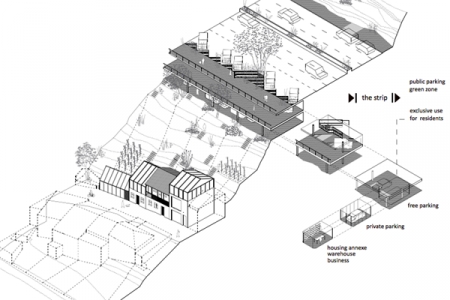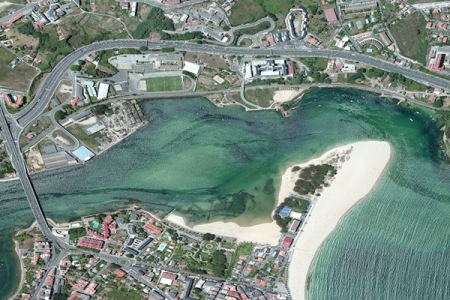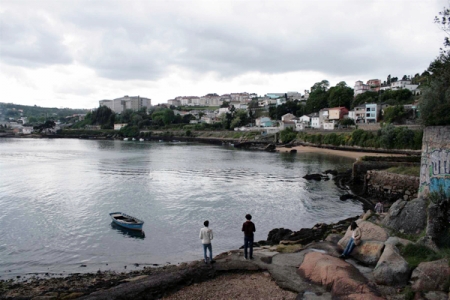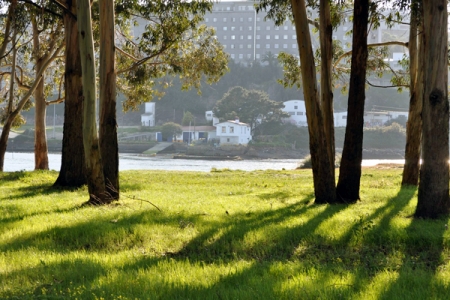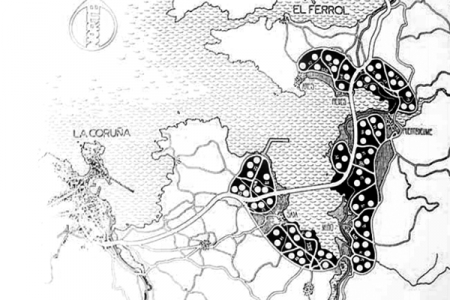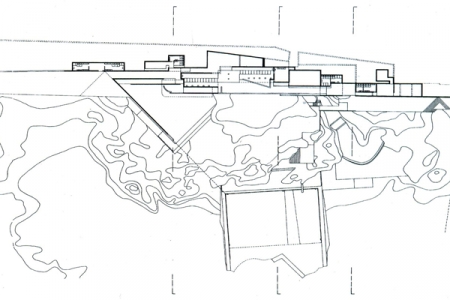Nice to 'sea' you
A Coruña (ES) – Winner
TEAM DATA
Team representative: Juan Miguel Salgado Gómez (ES) – architect; Associates: Alba González Vilar (ES), Yago Liste Quintela (ES), Luis Manuel Santalla Blanco (ES), Vanesa Veira Castro (ES) – architects
Contributors: David Domínguez Mariño (ES) – architect; Ander Bados Sesma (ES), Antonio Antequera Reviriego (ES) – students in architecture
c/ Ángel Rebollo 88, bajo izq. 15002 A Coruña – España
+34 881 993 083 – mail@flu-or.com – www.flu-or.com
See the complete listing of portraits here
See the site page here

J. M. Salgado Gómez, A. Bados Sesma, A. Antequera Reviriego, A. González Vilar, V. Veira Castro, L. M. Santalla Blanco & Y. Liste Quintela
INTERVIEW
Click on the images to enlarge
1. How did you form the team for the competition?
Flu-or is an architecture studio of three architects and two collaborators. To confront the challenge of Europan and support the work of the office we decided to extend it with three additional architects, related to our philosophy.
2. How do you define the main issue of your project, and how did you answer on this session main topic: Adaptability through Self-Organization, Sharing and/or Project (Process)?
“Nice to 'sea' you” is an urban activation plan. We think global, but we act through small interventions that organize the area and valorise it. In relation to the main topic of this edition, we found it interesting to involve all the actors of this scene for them to support the continuity of the project.
3. How did this issue and the questions raised by the site mutation meet?
The project lies on flexible bases that orientate a possible growth and development of the area. It always supports the own local identity. “Nice to 'sea' you” looks for the auto-development of this site, turning it in a productive neighbourhood.
A lot of diverse actions in the coastal edge involve the residents all the time, even in the formalization of the project and its enjoyment.
4. Have you treated this issue previously? What were the reference projects that inspired yours?
We can say yes. The way of thinking and the acts of the studio has always had relation with the p2p processes, where people are involved across small projects. Our goal is to improve the situation rethinking about the daily life.
5. Today –at the era of economic crisis and sustainability– the urban-architectural project should reconsider its production method in time; how did you integrate this issue in your project?
The exposition of the project is a base needing necessary steps and, at the same time, showing alternatives. It turns into something flexible throughout the time. To come to the final scene we know intermediate possible steps.
In housing, for example, we understand the first thing is to reinforce the existing plot and solve the mobility problems, which then will demand a growth.
6. Is it the first time you have been awarded a prize at Europan? How could this help you in your professional career?
Yes, it is the first time we have been rewarded in Europan. Being winners of the Europan contest gives us visibility. We believe that if the town hall supports our project and we can implement some interventions in the area we will have more requests.

